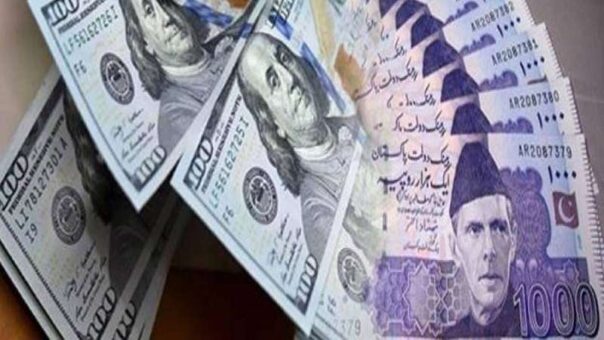Karachi, April 29, 2024 – The Pakistani Rupee edged down slightly against the US Dollar in Monday’s trading session, with the closing rate marked at PKR 278.40 in the interbank market. This represents a minute depreciation from its previous close of PKR 278.39 on Friday.
The minor shift in the exchange rate in rupee against dollar occurs against a backdrop of persistent concerns over dwindling foreign exchange reserves, which remain a significant worry for the economic health of the country. According to the latest figures released by the State Bank of Pakistan (SBP), the national reserves have slipped to $13.28 billion, a reduction of $94 million from $13.374 billion as recorded on April 12. The decrease largely stems from substantial payments made towards external debt, a recurring financial hurdle that Pakistan continues to grapple with.
Amid these fiscal challenges, there was a silver lining with the rupee gaining some ground due to a reported current account surplus in March 2024. This development indicates a positive movement of higher foreign currency inflows than outflows, suggesting signs of a potential economic recovery. Market analysts interpret this as a cautiously optimistic sign, providing some stability in an otherwise volatile economic landscape.
The government remains hopeful that the SBP’s reserves will recover to above $10 billion by the end of June 2024. This optimism is largely based on expected financial support from the International Monetary Fund (IMF) and other international sources, which is seen as crucial for strengthening the financial foundation of the country.
Nonetheless, Pakistan’s economic prospects are still clouded by broader geopolitical tensions and ongoing domestic political instability, which pose significant risks to the nation’s economic stability and investor confidence. The strained relations with neighboring countries, coupled with internal challenges, remain significant hurdles that could impede the country’s path to economic normalization.
In response to these issues, the government is actively engaging in new economic initiatives, such as pursuing potential trade agreements and bolstering economic partnerships. These measures aim to diversify Pakistan’s revenue streams and provide more stability to the economy. There is also an increased focus on improving domestic revenue collection and enhancing fiscal management as key components of the country’s broader economic reform strategy.
Financial experts maintain a cautiously optimistic outlook on the rupee’s short-term performance, underlining the critical importance of continuing economic reforms and securing international financial assistance packages. While the rupee’s recent performance against the dollar shows only a slight improvement, it is nonetheless viewed as an indicator of potential underlying stability in Pakistan’s economic framework.
The immediate future for Pakistan’s economy will largely depend on how effectively it can address the intricate mix of economic, political, and geopolitical challenges it faces. The outcome of forthcoming international negotiations, especially with the IMF, will be crucial in determining the nation’s economic direction in the coming months.
